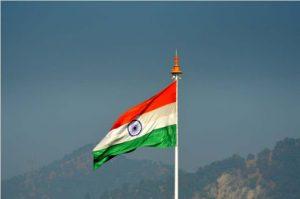Amid the India-China standoff which started a few months back, the Indian Army has announced that it will be using double-humped camels to patrol the areas and to transport materials along the border.
The army said that this plan was made three years ago but from now it will be in action. Areas like Daulat Beg Oldie and Depsang are at a great height of more than 17,000 feet where both the countries have deployed a large number of soldiers and traveling there in a four-wheeler is very difficult so from now onwards double-humped camels will be used for the movement.
The double-humped camels also known as Bactrian camels are found in the Nubra valley of Ladakh. The upbringing of camels is done at a defense institute in high altitude in Leh by Defense Research and Development Organization (DRDO). Among those camels, there is a camel named Rangoli who was born under the breeding program done by the institute in Leh.
Various trials and comparative studies on a single-humped camel brought from Bikaner, Rajasthan showed that double-humped camels are best suited for the task in the region than single-humped camels. The Bactrian camels can comparatively do better than single-humped camels.
The breeding of camels will take place in an institute in Leh so that the Indian Army gets the required number of camels. As per the sources, the batch of camels that will be commissioned to the Indian army will have about fifty animals in it. Till now the Indian Army is using ponies for transportation and they can carry a weight of around fifty kilograms. But the double-humped camels can carry 180 to 220 kilograms of load consisting of ammunition, ration, and other essentials.
According to Colonel Manoj Batra, a veterinary officer in the Indian Army the Bactrian camel can survive for seventy-two hours without water. He further added that these camels will make it easier for the Army to transport and patrol and should be handed over to the Army in the next five-six months.
To test the abilities of camel, trials have been carried out at the heights of Daulat Beg Oldie. These camels were used as means of transport for trade on the silk route between Tibet and Ladakh. The Indian army is looking to expand its patrolling and transporting capabilities even in the remotest areas of Daulat Beg Oldie and Depsang where the tension is increasing between both the Nations.
Until now a breed of ponies called Zanskar was used by the Army but it was felt that they are not much suitable for the sandy terrains and they can carry a load of only 40 to 50 kilograms. The project was introduced after the Doklam faceoff which took place in the year 2016 between the Indian and Chinese army on the tri-junction of India-Tibet-Bhutan in Sikkim.
The early population of double-humped camels was only 36 but the breeding will ensure that the number of camels will keep on increasing and the old ones can be replaced by the young ones. Currently, there are about 166 camels but soon there will be 200 camels. The breeding has bought a sigh of relief for the people who love animals and for the activists who work for the safety and welfare of animals. An action plan was prepared by the district authorities for the conservation of double-humped camels but the plan was not further forwarded to the center. The owners were responsible for the protection of these camels.
Earlier these camels were left abandoned because of the development and entry of modern facilities in remote areas. The camels were overlooked and uncared which led to the extinction of these camels. But in 2003 people of Hunder village of Nubra valley started camel safaris. As the idea gained popularity the villagers formed a registered cooperative society named Central Asia Camel Safari.
Then people from other villages like Sumoor, Diskit, and Tigger also started their own camel associations. Today these safaris along with the beautiful view of the Shylok River in Nubra valley has become a great center of attraction among tourists. This initiative of Hunder village’s people has also contributed to the stoppage of extinction of double-humped Camels.
The tourist season in Nubra valley begins in the month of October. According to the residents of Nubra valley, the double hump camel owner earn up to Rs 4 lakh per season and this could be more if the season at Nubra valley remains for long.
According to Iqbal, an Army official said that the department is keeping a tight vigil to prevent animal cruelty towards the camel, and brick stands have been made for the tourist to ride the camels without making the camels sit and stand. He also said that the double-humped can survive in the harsh winters and can bear a temperature of minus forth degrees. The population of double-humped camels in the world is around 8.44 lakh with China topping the list with 2.70 lakh double-humped camels.



